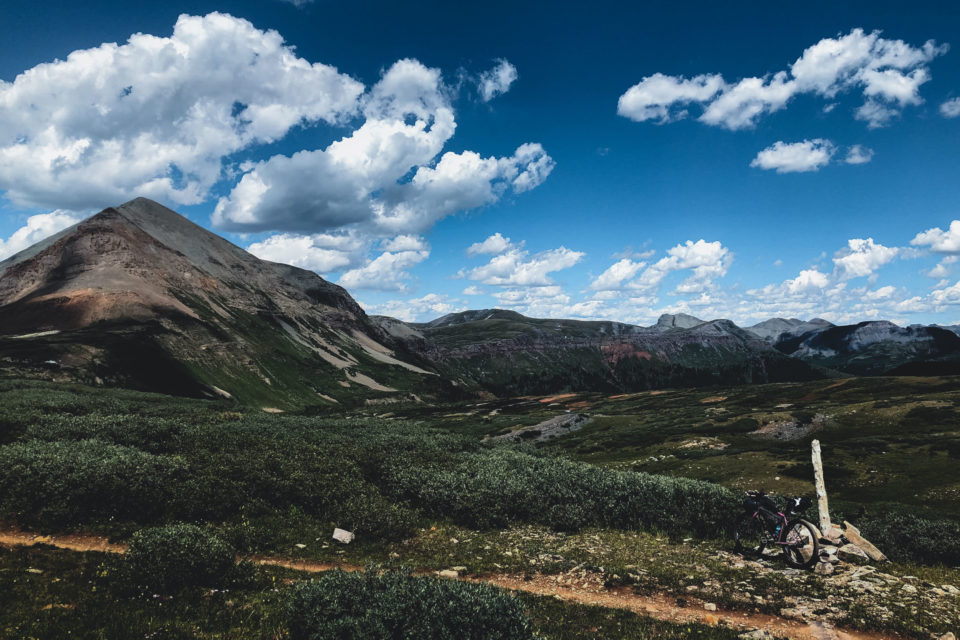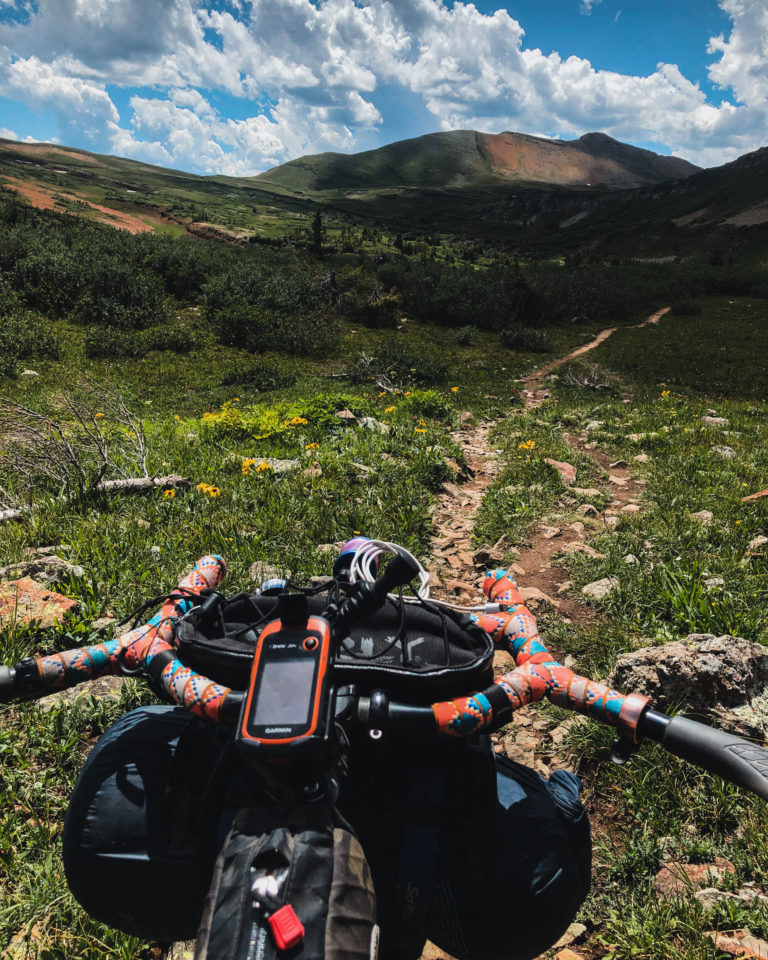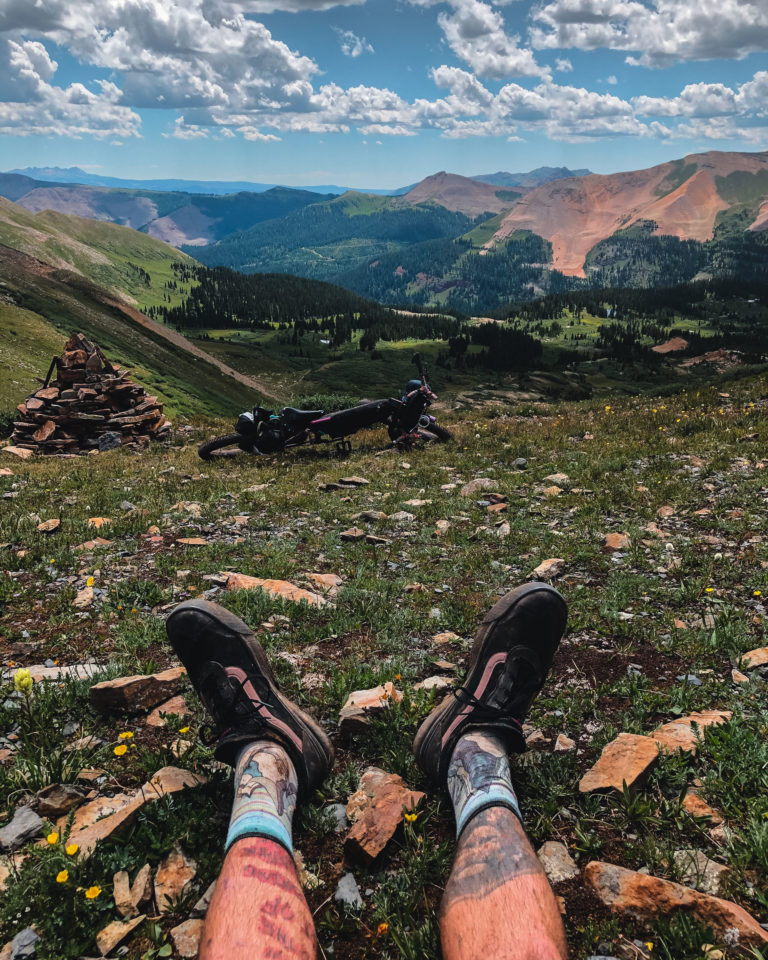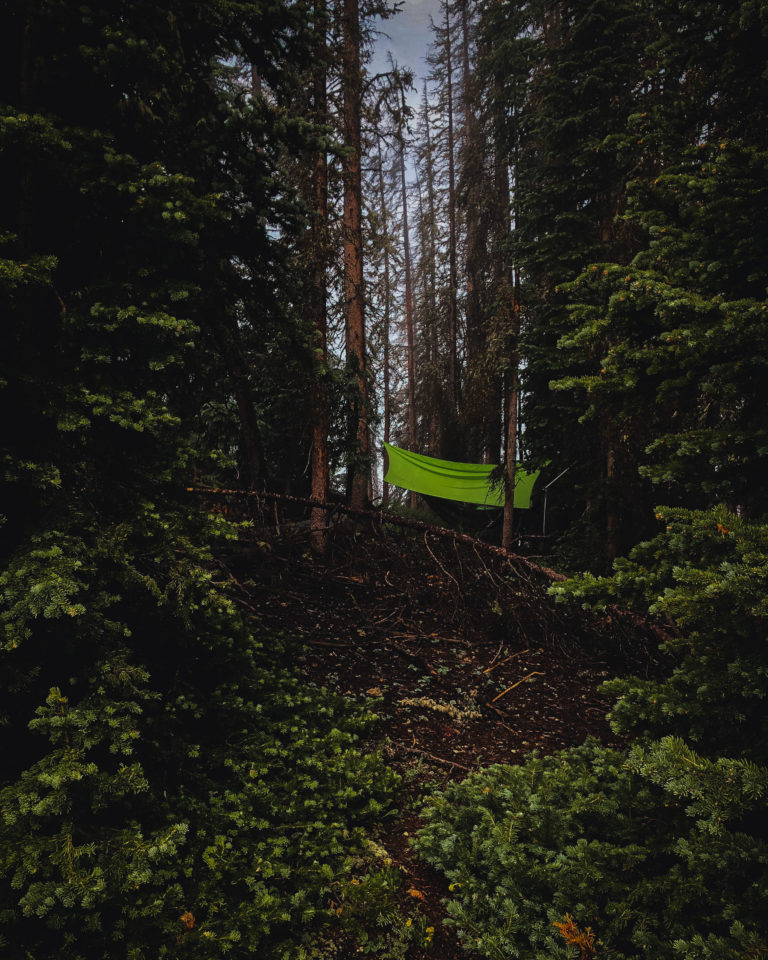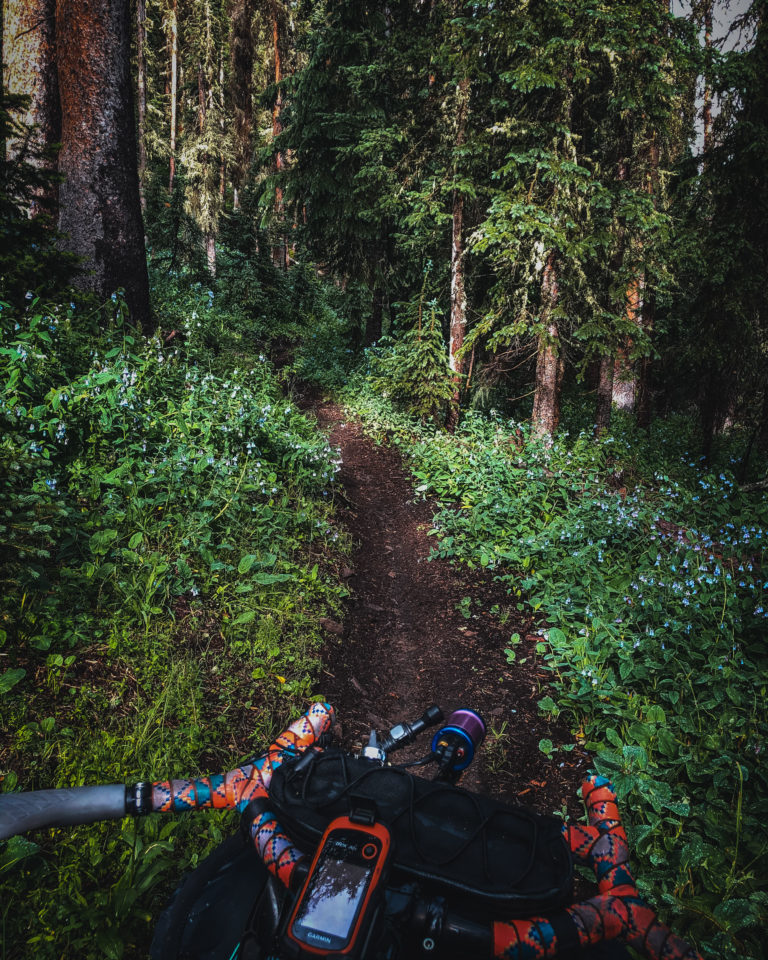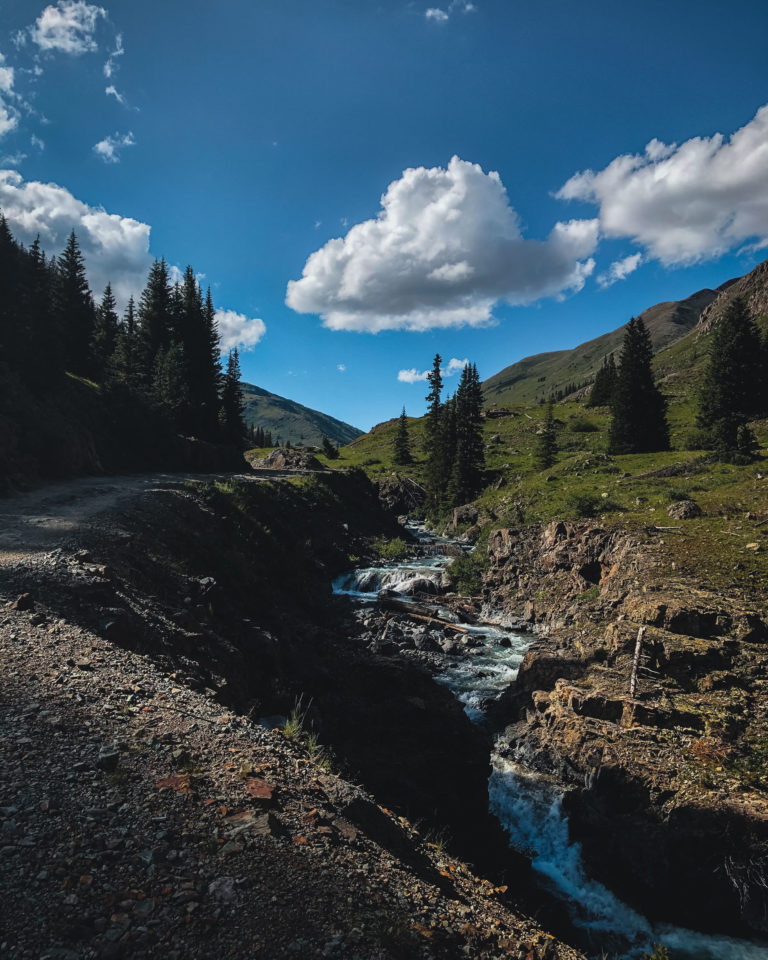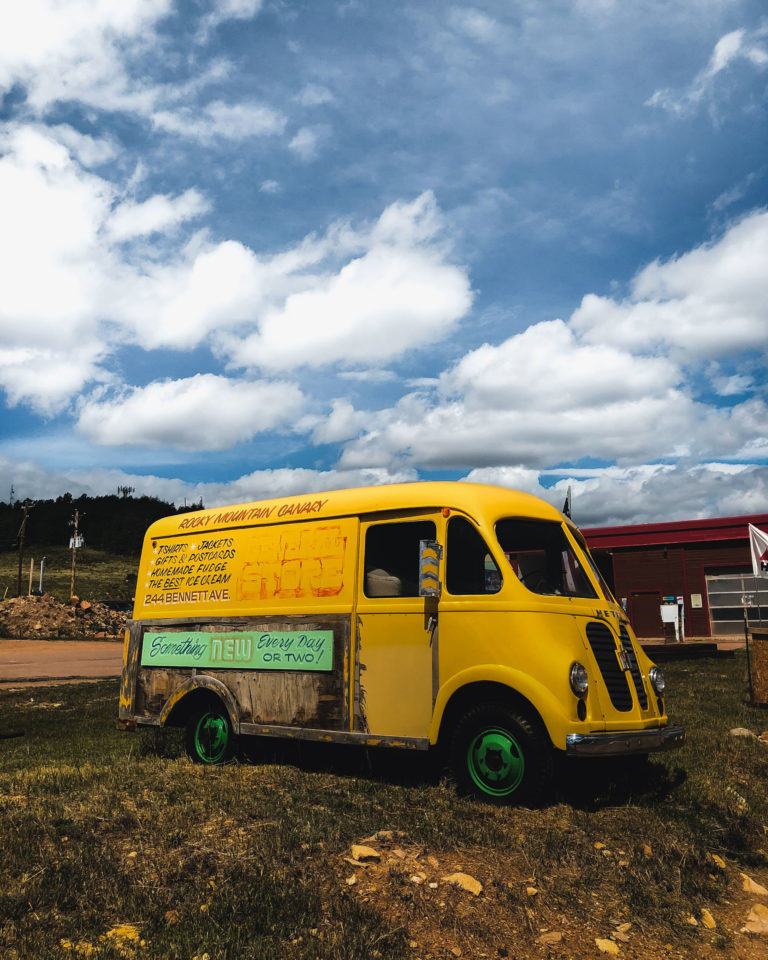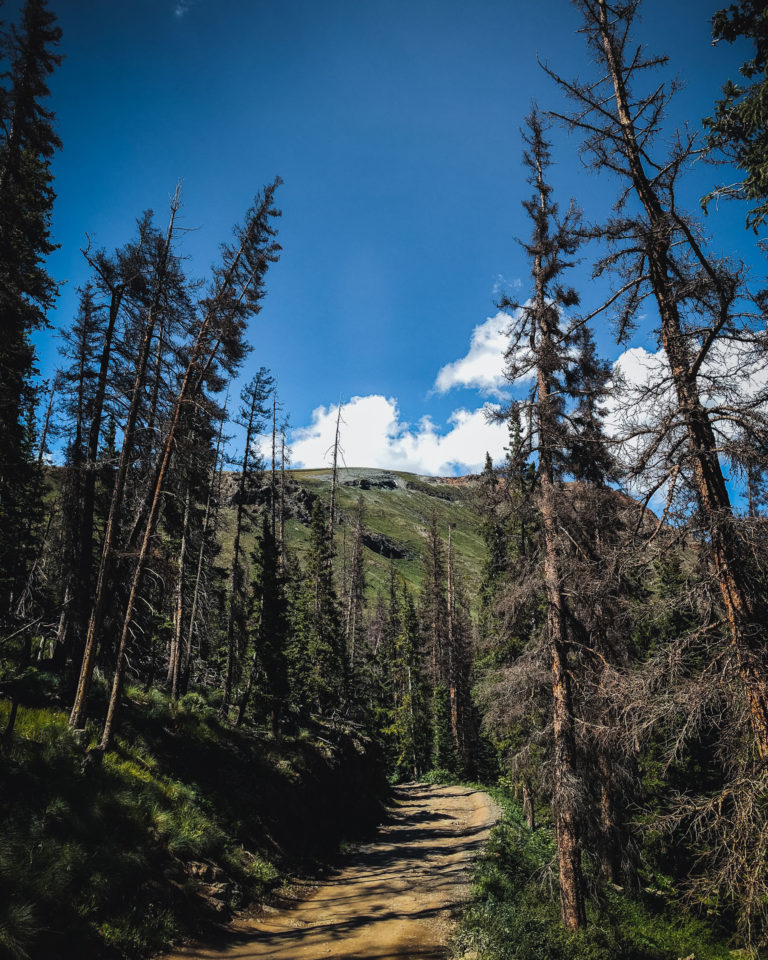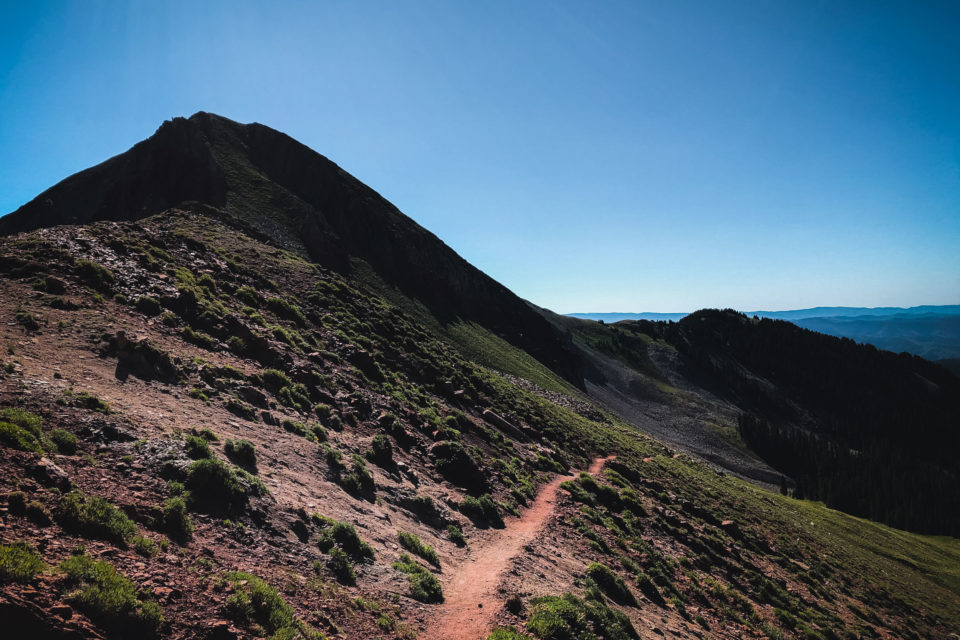Liquid Sunshine: Fixed Gear on the Colorado Trail
Share This
Over the summer, Christopher Schmidt set out to take on the southernmost portion of the Colorado Trail, from Buena Vista to Durango, aboard his fixed gear bikepacking rig. Find his story of seemingly impractical bike choices, trail magic, evading lightning bolts and heavy rain, and more here…
Words and photos by Christopher Schmidt (@hella.bangerz)
This year has been a whirlwind of canceled plans, canceled travel, and canceled life. In March, coinciding perfectly (and ironically) with my birthday, the organization I work for closed its doors completely and shifted to a work-from-home model. Managing elite and community track cycling programs at the velodrome in Colorado Springs for work was rendered impossible while working from home, and as layoffs loomed, my position was ultimately eliminated. I was one of the lucky few, however, and after being reassigned within the organization, was able to avoid the job hunt. After a month back at work, watching the pandemic situation unfold, I realized it would behoove me to use the vacation hours I’d accumulated sooner rather than later. Employment seemed to be a teetering security. Three days later, I set out to tackle the southernmost portion of the Colorado Trail, from Buena Vista to Durango, all on my fixed gear.
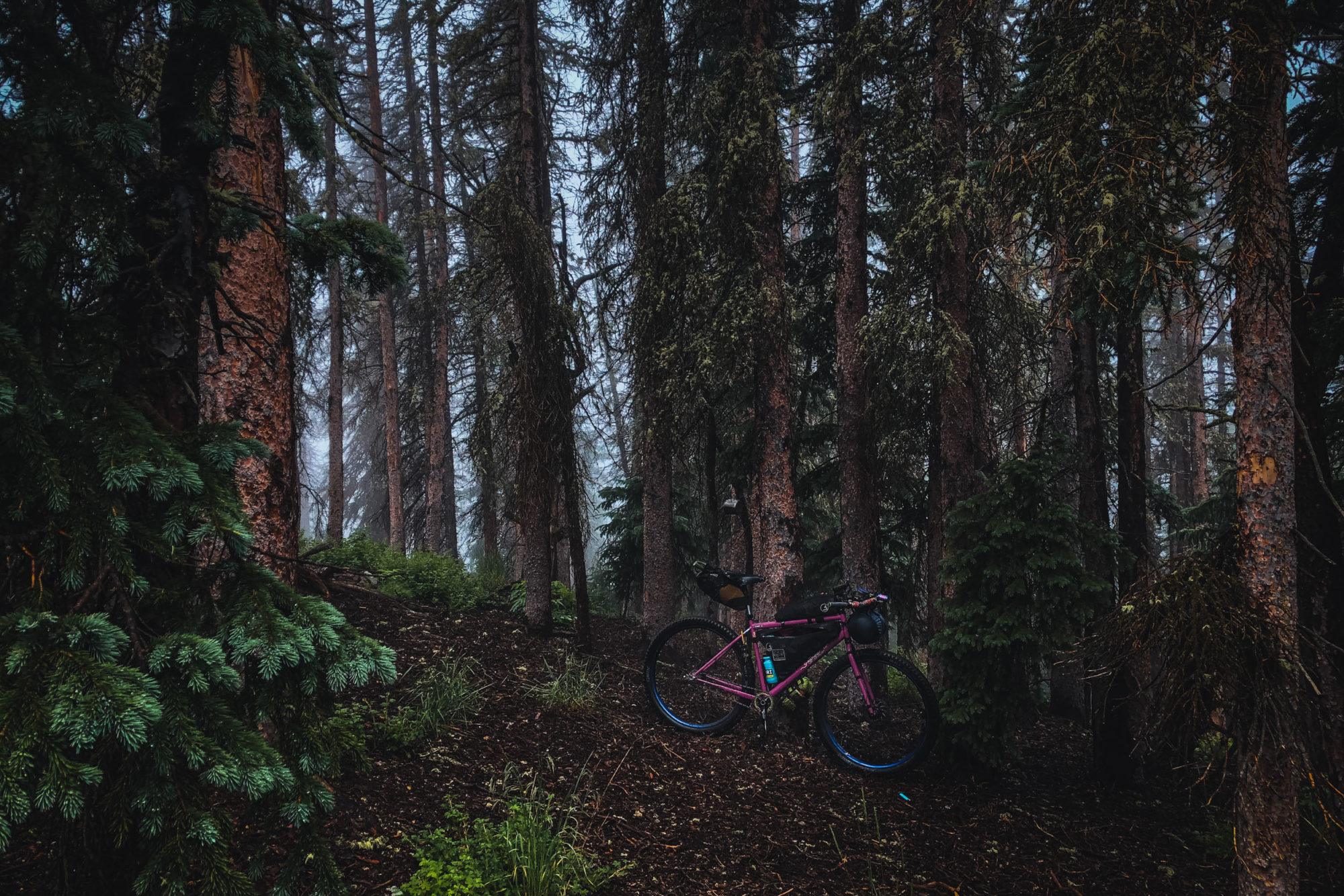
The only portion of the ride I planned in advance was the stretch from Colorado Springs, located just south of Denver to Buena Vista, a typical Colorado town. With the Colorado Trail being so well marked, I reasoned that I’d make my way to Buena Vista, then wing it from there. I absolutely would not recommend the route I haphazardly strung together. It seemed to consist mostly of endless miles of farm roads (faint outlines of horrific wagon trails) that I bumpily traversed in an attempt to piece together my way to my destination while avoiding the treachery of the highway. I managed to cover over 130 miles, leaving Colorado Springs at 4 a.m. and finally setting up camp around 8 p.m. just outside the friendly town of Buena Vista, pleasantly tired and slightly apprehensive about the impending monsoons. As if on cue, I finished setting up my hammock and tarp just as the wind and the rain began howling. Colorado’s monsoon season had made the news for the few weeks before my journey and was anticipated to be at its worst precisely during my trip.
I woke early enough to give myself ample time to peacefully traverse the short section of highway I’d need to use to get out of town and was rewarded with a frothy sunrise that illuminated the Collegiate Peaks—the cluster of nine 14,000-plus-foot mountains to my west—and blessed silence from the normal din of traffic that plagues the area during peak tourist season. Having completed Salida’s Big F**king Loop the summer before, this stretch of the Colorado Trail was the ideal start to my adventure. Hike-a-bike was the name of the game and would prove to be a taster of the rest to come.
Those who have completed Fosses Creek have likely been lucky enough to do so in a descending fashion for their first time. I was not so fortunate, as my first “ride” ended up consisting of pushing my bike, arms extended, legs straining, directly up the side of a goddamn mountain. After what must have been at least four hours, I emerged at the summit, short of oxygen, only to be welcomed by a relentless barrage of hail, rain, and vicious wind. I decided to try my luck and push onward to Marshall Pass but was forced to recede and take refuge with some similarly stranded hikers at a small weather shelter. I decided to wait it out, hesitant to push forward due to the rain pounding into the peaks that were now eye-level with my campsite. Thunder shook, lightning filled the pitch-black sky, and the accompanying winds kept my hammock rocking at a consistent tempo throughout the night.

After a restless night spent waking up repeatedly to the monsoon besieging my hammock, I was excited to break down my camp and be back on two wheels by 8 a.m. My happiness was short-lived, however, as this section of the trail turned out to easily be the most challenging section of the Colorado Trail from my perspective. I was forced off of my bike and into hiking formation thanks to wet rocks, gnarled roots, and intensely viscous mud that plagued me relentlessly. Rigid fixed gear or not, this section of the trail was particularly FUBAR, thanks not only to the weather but the rough trail conditions. Even with a “normal” mountain bike, I’m fairly certain I couldn’t have made it through this section any faster—or more gracefully. Now, before any of you internet dorks start criticizing me for my choice of bike (or presumed lack of knowledge around suitable MTB options) rest assured I know and understand my options. While I understand the perceived ridiculousness of attempting the Colorado Trail on a rigid bike (let alone a fixed gear), this bike is sick!
The bike I chose for this adventure, christened Lina, is a custom Ground Up frame with one front brake mount, that I purchased from Fixie Dave back in 2018. For the CT, I rode two Terrene McFly 2.8” tires on Velocity Dually rims. The front fork is 135mm-spaced with a SON dynamo hub and a 135mm-spaced rear end with a Surly fixed gear hub and dingle speed cog. The crank is a cheap SRAM Stylo I grabbed at a bike swap with Fixation nylon flat pedals and I’m fairly certain the NOS Rockshox suspension seat post (which a Brooks B17 sits atop) has completely seized in the frame. I’m an absolute fanboy of the Surly Moloko handlebars and use them on three of my bikes, Lina included. My light is a custom Sinewave beacon that perfectly matches the obnoxiousness of the entire setup, with my main frame bag being a custom bolt-in from J-Paks, with the J-Paks Farva top tube bag and a medium Oveja Negra gear slammer rounding out my bag selection.
My sleep setup was a Sea to Summit ultralight hammock with a Western Mountaineering Slinglite underquilt, an Astralite top quilt, and a cheap ENO tarp (more on that later) that I used for rain protection. I included a Garmin Etrex 20x (that I didn’t end up even turning on), and one fuel canister and a cheap topper from Sierra Trading Post. I packed a Marmot rain jacket and two pairs of Smart Wool socks that lived inside an incessantly wet pair of Vans Ultra Range sneakers. One notable piece of gear that I bought specifically for the ride (and was extremely impressed with) was the Biolite 330 headlamp, which faithfully illuminated my way without complaint while fitting snugly to my helmet and being a joy to use. For hydration, I carried a 3L Camelbak tucked into my frame bag for water, plus a single bottle with an MSR Trailshot for water filtration.
As the third day drew to a close, I’d only been able to cover only roughly 20 miles in eight hours. The winds had picked up and the hail and rain, as expected, weren’t far behind. With my knowledge of mountain weather, I could tell that this storm was firmly lodged above me for the foreseeable future. After climbing to roughly 11,000 feet, I set up camp just before sunset and steeled myself for another night of ceaseless rain and hail that didn’t pass until morning. Taking shelter in a hammock for 14 hours can make or break a man. Not only is there an eerie feeling of isolation, dangling there between two trees and exposed to the extreme elements of a Rocky Mountain monsoon, but there’s also the (rather justified) fear of being struck by lightning. While I was certain a bolt with my name on it was due to arrive at any moment, it luckily didn’t, and my small flask of whiskey, my pistachios, and plenty of herb helped me survive the storm as peacefully as possible. I awoke to find the morning sun pushing out the rain, and I was able to get my thoroughly drenched gear packed up and made my way, damp yet not defeated, back to the trail by 7 a.m.
After the fortuitous arrival of the most perfectly timed trial angels, I wolfed down the five veggie burgers and glorious amount of Coca-Cola they provided, and determined that I’d have to make a detour to Gunnison, a small college town north of my position on the trail. As I was pelted with monsoon rain (that turned into monsoon hail) the night before, my tarp was ripped to shreds, and repair was necessary. I used my phone to map my 38-mile detour and was able to find a Wal-Mart so I could buy the duct tape needed to patch the holes. It turned out to be a welcome diversion, as it afforded me the opportunity to adjust my route to pass by the Blue Mesa Reservoir—a treat I’d yet to experience despite living in Colorado for 13 years—which found me winding my way through a striking landscape that was a welcome break for my treeline-accustomed eyes. Although the Colorado Trail (and the Rocky Mountains in general) are absolutely stunning, the surrounding areas and their pensive and diverse expressions of Colorado beauty are equally remarkable.

Instead of backtracking the 40ish miles to rejoin the trail exactly where I’d left off, I decided to ride southwest through Lake City and make my way up Cinnamon Pass to Silverton—an old Colorado mining town nestled snugly between the aptly named Storm, Kendall, and Little Giant Peaks. Cinnamon Pass, while not for the faint of heart, is well worth the climb. I didn’t see another cyclist after leaving Lake City as I began my ascent. There was heavy traffic—mostly side-by-side’s jostling along the dirt road to the summit—but the drivers were extremely friendly and ecstatic to see someone attempting the pass on a bike. I can’t speak enough to the kindness of these strangers. Every time I stopped for water, or the simple necessity of having to push my loaded bike up the steeper parts, each passing vehicle would stop to make sure I didn’t need anything and cheer me on in my endeavor. The descent was a welcome reward for my efforts. As I wound my way through the Animas Forks, following the glacial blue water through a valley littered with historic mining cabins, my feet wedged Spiderman-style on my top tube, pedals whizzing below, I felt very humbled… and very hungry.
I rolled into Silverton, stomach growling, and found a small trail that wound down to the Animas River and wearily set up camp. As I pondered the night before, on this, the first clear night I had experienced on the trail, it seemed days had passed, not just 16 hours. I was a bit disheartened at having to take a tarp-repair detour when my goal was to tackle as much of the Colorado Trail as possible, and thoughts of whether I should’ve backtracked and risked being caught in another night of rain and hail at treeline played in my head. Exhausted and full of regret, I fell asleep.
The next morning as I pulled away from Silverton, I hurried along an uneventful stretch of highway before rejoining the Colorado Trail. I was back on track, and the final stretch was pure bliss. The singletrack I found myself riding was in immaculate condition, with a blissful absence of the need to dismount and push—apart from an extremely rocky section or two as I made my way past a segment known as Hermosa Creek. I had planned to allow two days to make my way from Silverton to Durango, where the trail culminates in the very southwest corner of the state, but simply couldn’t stop pedaling. Every summit, every climb, and every descent was better than the last. The sheer beauty of the San Juan Mountains that surrounded me as I made my descent into Durango was immeasurable.
Pulling into Durango, I promptly found pizza, beer, and a cheap hotel. The previous six days felt like a catalyst for even more fixed gear adventures that I was already daydreaming about as I savored my first hot shower in days. I felt gratitude. But mainly I felt the unadulterated pleasure of simply riding my bike, whatever way I choose.
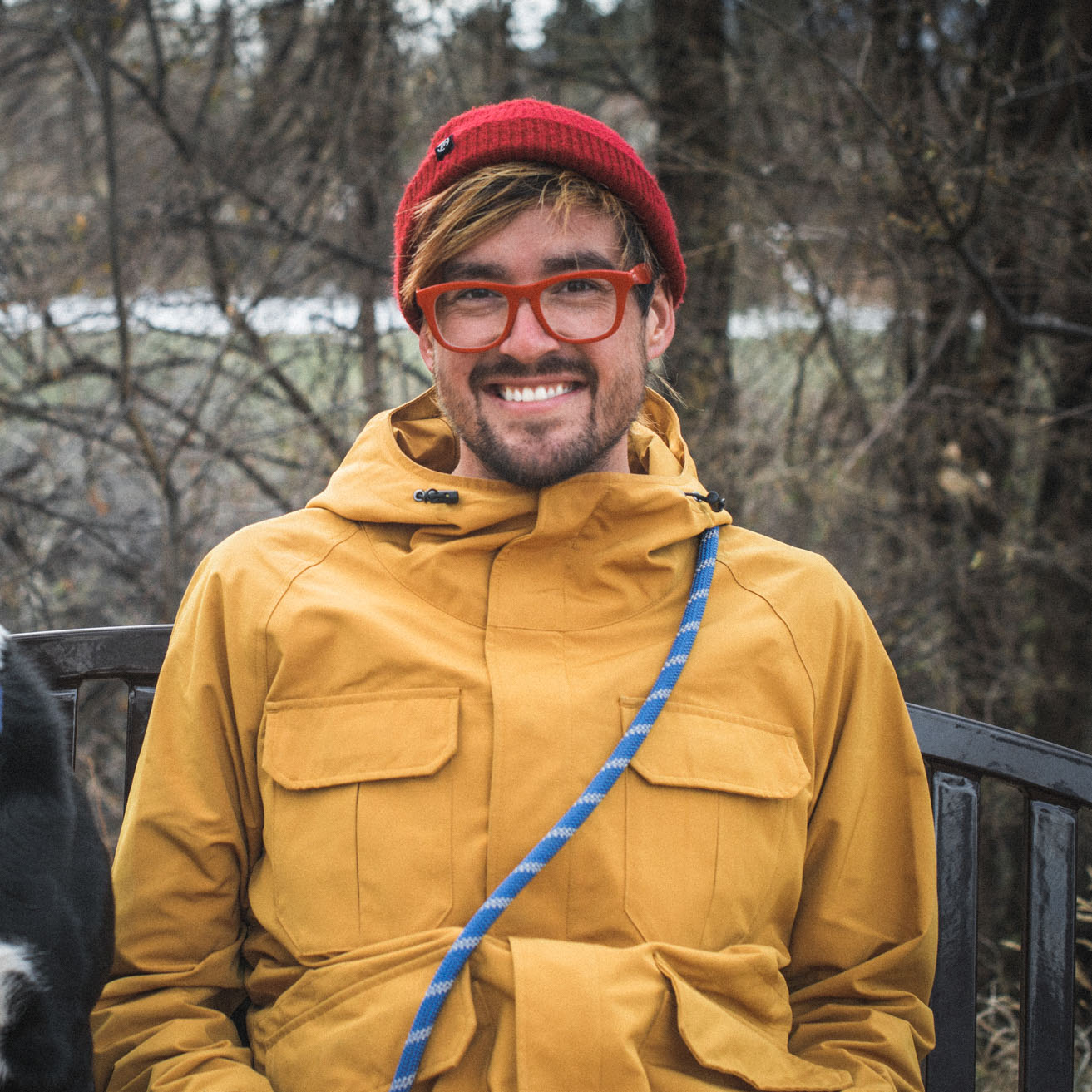
About Christopher Schmidt
Working for the U.S. Olympic and Paralympic Committee for nearly a decade, Christopher has been afforded the opportunity to travel the world supporting U.S. track cycling while adventuring around the Mountain West on his fixed gear bikepacking rig. After focusing his university studies on visual sociology, Christopher now uses photography as a tool to explore culture, society, and cycling. He lives in Colorado Springs with his partner, Lauren, and dog, Eddy Mercx. Find him on Instagram @hella.bangerz.
Please keep the conversation civil, constructive, and inclusive, or your comment will be removed.













